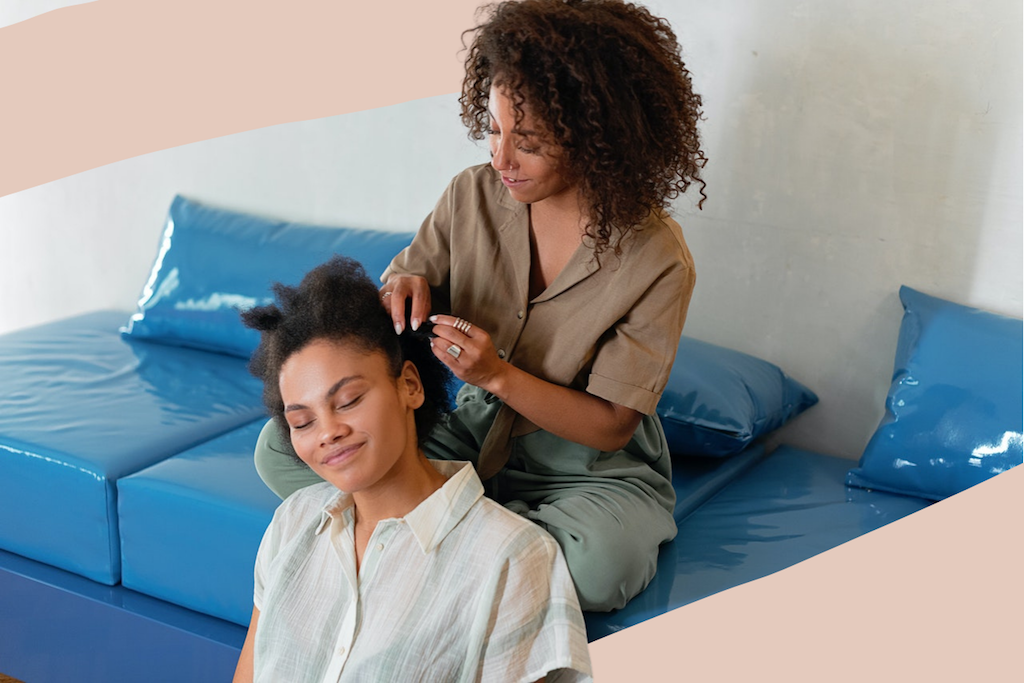Beautiful curly hair comes in so many shapes and sizes; 3a, 3c, 4a to name just a few. So, when it comes to hair care, it’s not a one size fits all kind of deal. However, there are some general ways girls with curls can look after their hair, especially in the winter months when your hair is often in need of some extra TLC. With this in mind, here are 8 curly hair care tips that you need to know for winter.
IT’S ALL ABOUT THE MOISTURE
There is no doubt that winter can play havoc with our hair. Blustery winds snarl our locks, snow, rain and ice make hair brittle, and dry indoor heating is just as damaging as a hairdryer. Yep, winter is undeniably harder on your locks because there is less moisture in the air which can spell disaster for bouncy curls.
It’s no secret that curly hair can get dry fast, especially in winter. Because of the curves and turns that curly hair has, natural hair oils don’t travel smoothly from the scalp to the ends, causing a lack of moisture. As such, that lack of moisture is the number one reason for damaged hair, as it makes it fragile and harder to take care of.
You can tell if your hair needs more moisture if it feels rough to touch and is frizzy. And if some pieces of your hair are reaching up into the air, then that’s a telltale sign of thirsty locks.
So how do you quench those thirsty locks? Firstly, regular masking can make a massive difference to your locks – getting into a routine of doing it once a week is a good idea. Secondly, while your hair is still damp, apply your products so the moisture is sealed into your curls as it dries. Remember to apply your products heaviest to lightest – so, that’s leave-in conditioner first and then oil which will lock in moisture and protect your hair from the dry and damaging cold weather
Remember that hot water can cause damage to your hair as it removes all the oils. And whilst we realist it’s not the most comfortable thing to do in winter, washing your hair with cold water will better lock the moisture inside your hair.

THE RIGHT PRODUCTS
There are endless shampoos, conditioners and other hair products on the market, all of which can make choosing the right ones confusing. Unfortunately, not all products are good for your hair. Some of them can cause dryness, split ends, and extreme breakages.
The hair care experts from Curl Centric recommend reading the ingredients of every product you buy to ensure that it doesn’t have harsh chemicals that can damage your hair. Products that contain sulfates, parabens, petrolatum parabens, petrolatum, and mineral oil can be a major reason for your damaged hair. They also highlight that unfortunately, these ingredients usually constitute at least 85% of the product market, so be scrupulous.
BTW, DON’T OVERMOISTURE
Although paying attention to moisture and hydration is one of the top ways to achieve frizz-free curls, too much of it can be a bad thing. With curly hair, moisture overload can happen suddenly and make your hair limp and stop curls from forming. Moisture overload can lead to hygral fatigue, which, in layman’s terms, is damage to your hair follicles caused by swelling from excessive moisture and over conditioning.
If you experience a change in your curl pattern and they start to feel greasy, sticky and weighed down, then use a clarifying shampoo. We’re also fans of apple cider vinegar rinse for curly hair. It’s a good shampoo replacement for curly hair because it’s oh so gentle and doesn’t alter your natural curl pattern.
SQUISH TO CONDISH
This is another way to lock in moisture to your hair that world all year round, but we thought it deserved its own subtitle. ”Squish to condish” (or S2C) is a hair conditioning method created by hair stylist Melissa Stites. As Glamour explains, the “method that helps push even more moisture into your curls to keep them hydrated and healthy even after you rinse”. They go onto say that it’s now “now one of the most popular curl-conditioning methods you’ll find on the interwebs”.
PROTECTIVE STYLES FOR WINTER
Consider wearing your textured hair in weaves or cornrows, otherwise known as protective styles. Doing so means that you won’t have to manage your hair for weeks, sometimes months. As Pure Wow explain, these “styles that reduce tension on the hairline, protect the ends and require minimal manipulation”. Some of the best protective hairstyles include straight back cornrows, Bantu knots, box braids and, of course, wigs.
BRUSHING
As we mentioned before, curly hair is naturally on the drier side, which means that it can break easily while brushing, adding more damage to it. If you feel your hair breaking while brushing, it’s time to change your methods.
Start by avoiding brushing it when it’s dry, as it will create more frizz. In fact, the best time to brush your hair is in the shower after you’ve conditioned it. This way, it will be easier to detangle without any damage. When it comes to the type of comb you should be using, use only wide-toothed combs to remove any knots.

ASK SANTA FOR SOME SILK
That wool beanie that you love so much is not doing any favours to your hair. Woolly hats can leave curly hair frizzy and flat; instead, ask Father Christmas for a silk or satin lined hat to prevent friction on your hair, which will, in turn, will prevent frizz and split ends.
Also, ask the big, bearded man for a silk pillow. As Bustle explains, ”Silk pillowcases can help your hair retain its moisture throughout the night and allow for even distribution. Unlike cotton, which can cause snagging and breakage, silk also helps to preserve your style because of how slippery it is”.
DRY YOUR HAIR THE RIGHT WAY
We all know the story. You’ve had your shower and you’re in a rush to hit the town; there’s not enough time to wait for your hair to dry, and you’ve been advised not to overdo the appliances during the winter months. The only solution, then, is to step out with hair still wet.
Big mistake. Firstly, you’ll catch a cold, you crazy thing. But more importantly, going outside with wet hair can do serious damage to your hair; when wet hair meets freezing cold conditions, it becomes less supple and much more vulnerable to breakage. As wet hair is very fragile, it’s essential to dry your curls properly, and take time to dry your hair the right way. Use a microfibre towel to do this most effectively.





